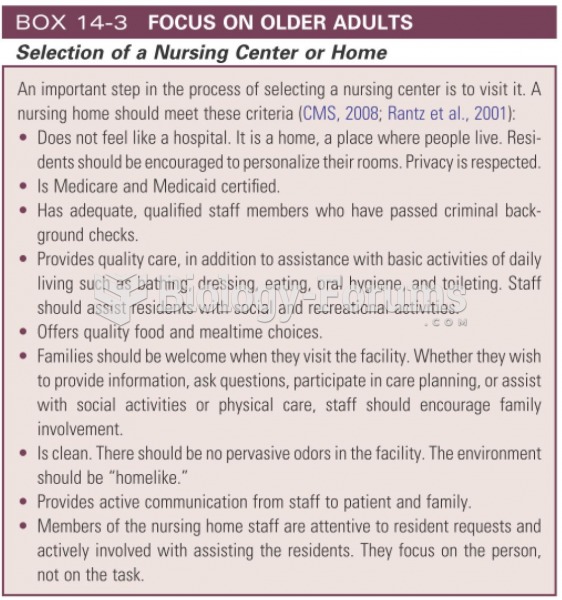Answer to Question 1
Correct Answer: 3
Rationale 1: Some OTC medications can be taken with prescription medications; others cannot.
Rationale 2: Although they have a high margin of safety, OTC medications are not without risks.
Rationale 3: Elderly clients often take multiple medications and should consult with their health care provider before taking any over-the-counter medication or supplement to ensure there are no risks for drug interactions.
Rationale 4: It is important for clients to read all directions on the label, but this will not protect them if there is a contraindication with another medication they are taking; therefore, they must consult their primary health care provider before taking any OTC medications.
Global Rationale: Elderly clients often take multiple medications and should consult with their health care provider before taking any over-the-counter medication or supplement to ensure there are no risks for drug interactions. This statement indicates adequate understanding of the session. Some OTC medications can be taken with prescription medications; others cannot. Although they have a high margin of safety, OTC medications are not without risks. It is important for clients to read all directions on the label, but this will not protect them if there is a contraindication with another medication they are taking; therefore, they must consult their primary health care provider before taking any OTC medications.
Answer to Question 2
Correct Answer: 2
Rationale 1: The number of side effects does not determine whether a drug is to be considered for over-the-counter (OTC) classification.
Rationale 2: Drugs that have a high safety margin may be reclassified as OTC drugs.
Rationale 3: The amount of time a drug is on the market does not influence the ability to change to OTC. Many drugs have been available for over 100 years and remain prescription.
Rationale 4: The FDA does not select drugs for OTC status based on fees paid by drug companies.
Global Rationale: Drugs that have a high safety margin may be reclassified as OTC drugs. The number of side effects does not determine whether a drug is to be considered for over-the-counter (OTC) classification. The amount of time a drug is on the market does not influence the ability to change to OTC. Many drugs have been available for over 100 years and remain prescription. The FDA does not select drugs for OTC status based on fees paid by drug companies.







